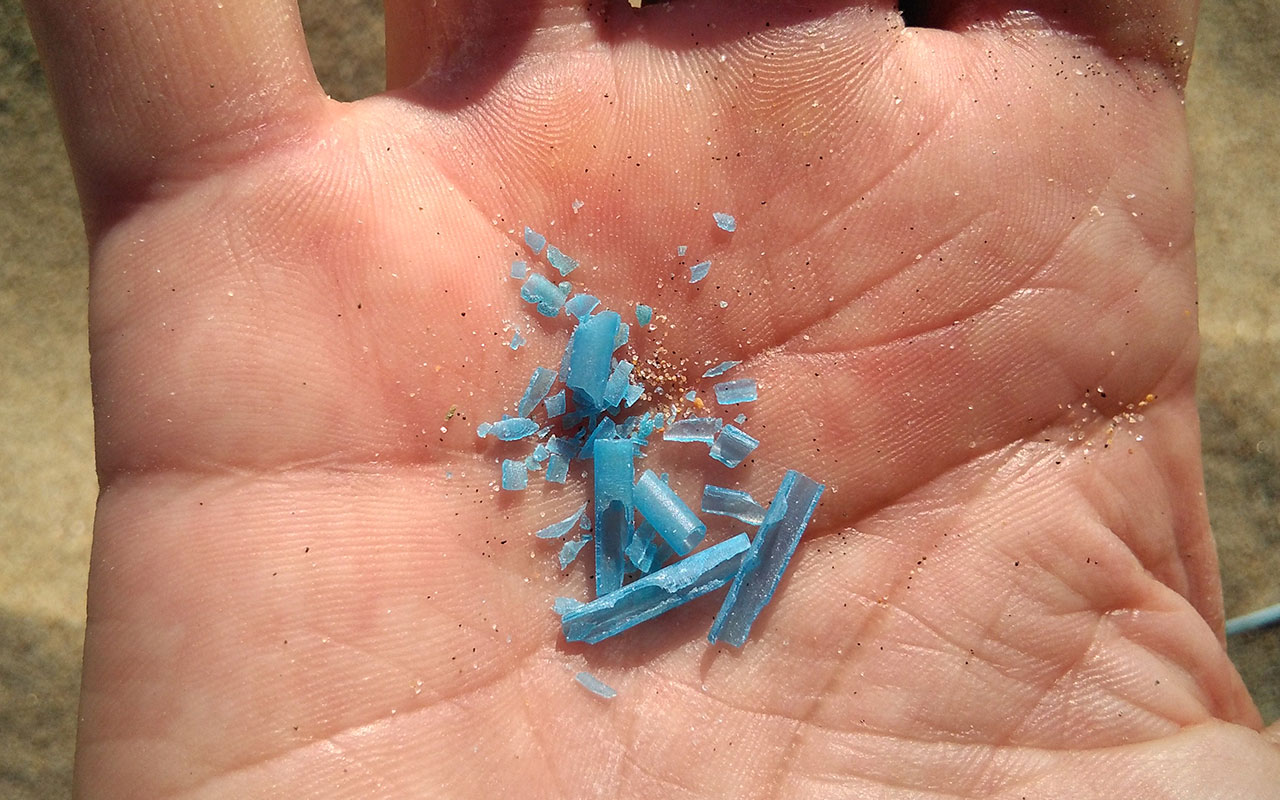Conventional plastic does not biodegrade.
No living being (neither microorganisms nor fungi) consumes plastic transforming it into natural chemical elements to reintegrate them into the natural carbon cycle that has sustained life for millions of years.
Plastic simply breaks down into smaller particles without changing its chemical composition. When they are less than 5 mm, they are usually called microplastics. They can become imperceptible to the human eye, which does not mean that they disappear.
That is why it is said that all the plastic that has been manufactured in history is still with us somewhere on the planet. This idea idea seems overwhelming to us.
Also, plastic is scattered across the planet. It has reached places as remote as Antarctica. And recent studies have found microplastics in drinking water, in bottled water, in salt, and even in the air. And it goes without saying in our seas!

8 million tons of plastic end up in the oceans every year. Which would be equivalent to emptying a garbage truck full of plastic every minute in them. As we continue like this by 2050 there will be more tons of plastic than fish in the seas. A large part of the objects that reach the sea are light containers, so it is difficult to imagine the volume that could reach. Do we really want to live on such a planet?
This is causing a lot of damage to all marine animals. And if you eat fish, this plastic can end up on your plate. Numerous studies have found plastic in fish found in markets.
In 2017, the UN itself, aware of the problem of pollution, declared war on plastic. Yes, it did not declare a battle, but a real war!

Animals of some 700 species have been documented to have become entangled in or swallowed plastic. When plastics are large, such as drift nets, many animals become trapped in them causing death or fin mutilation. Eight out of ten animals that get caught in plastic end up dying. Also once the carcass of the animal decomposes, plastic remains a drifting death trap.
More and more species are ingesting plastic. The basis of the feeding of sea turtles, for example, are jellyfish, which they mistake for plastic bags and end up eating them. Whales, fish and birds also mistake plastics for food, causing death. Even plankton has been found to be ingesting microplastics.
Plastics are polymer blends to which additives are added. They are used to improve their properties or to reduce their cost. There are thousands of additives on the market. Currently 13.2 million tons of additives are produced annually. The long-term effects of these exposures and the impact on our health and on natural systems such as the ocean are unknown, but there is increasing concern about it.
Also, as consumers, we cannot know the chemical additives that have been added to plastics. Of the estimated 150 million tons of plastic in the ocean, approximately 23 million are additives.
It uses recycled 100% paper, where a single tree is NOT felled and cardboard waste is reused to do so. These products DO NOT pollute and ARE biodegradable.

